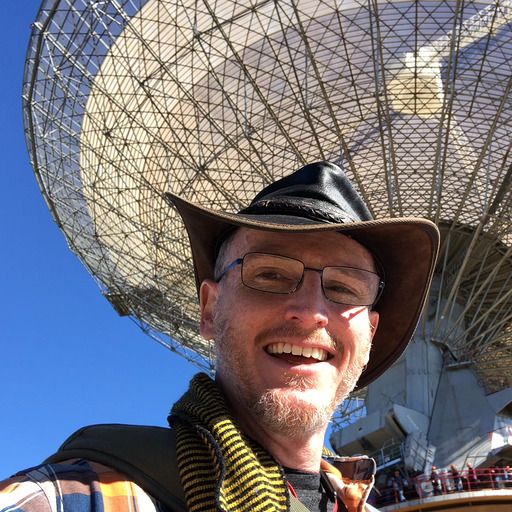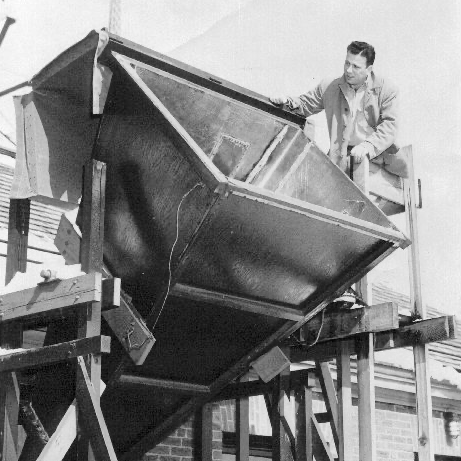A Backyard Radio Telescope
I'm building a radio telescope in my back yard, along with a few dozen teams across the country. With an upside down pyramid of aluminium cladding taped to a sawn-off olive oil tin wired to a USB TV tuner, we'll be able to figure out the rough shape of the galaxy.
It all started with a tweet from @SpaceAusDotCom:
We're excited to announce the first of our #InspiringNextGen projects - and want you to join!
— SpaceAustralia.com (@SpaceAusDotCom) November 23, 2019
Join our community project to build your own DIY Radio Telescope. Open to everyone; all about learning about Radio Astronomy.https://t.co/kYdBk2sqg6#SpaceAusScope
Credit: Hackaday pic.twitter.com/5TDmeePrlB
I was well disposed to this idea, having seen some of @SarahJamieLewis’ results, so, I got Rami to put Newcastle on the map amongst what turned out to be over thirty teams including radio astronomers, big E engineers, other people who know their stuff, and software engineers like me who are here to help.
Slack's not so great for sharing back to the wider community, though, and we'll inevitably hit the 10,000 message limit and have everything scroll off1, so I'm going to organise and publish my thoughts here.
What are you building, again?
We're going to build compact radio telescopes capable of picking up the Hydrogen line, also known as the H I line and, because the I is a Roman numeral, H1. We can do so affordably because we're building a single purpose instrument to replicate research first done in 1951 using modern hardware.
To get a narrow angular resolution, especially at low frequencies, a general purpose radio telescope needs to be huge. We're working at a high frequency with low angular resolution, though, so we don't need an antenna big enough for a game of backyard cricket:

The 62m dish at Parkes Radio Observatory
Thanks to a chipset mass-produced for USB TV tuners that a bloke named Eric Fry figured, in 2010, could be used as cheap hardware for Software-defined Radio (SDR), we don't even need an antenna the size of a garden shed, though most2 of us are copying its design because it's not just a horn — it's the horn:

… which brings us back to the aluminium cladding pyramid and olive oil tin.
The pyramid is a pyramidal horn antenna, which for this purpose is pretty good and a whole lot easier to build than the alternatives. The olive oil tin turns out to make an ideal radio frequency wave guide, through which we'll poke a probe antenna connected to our signal processing chain. At the front of that chain, a low noise amplifier will add several zeroes to the signal strength before feeding it to the SDR chipset and software on our laptop.
Bit by bit, I plan to redirect those links to blog posts in which I go to more detail. Y'know, once I figure it out.